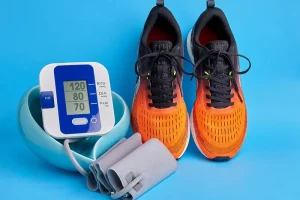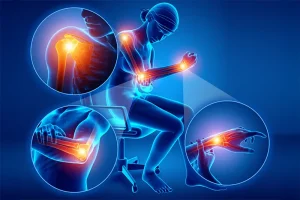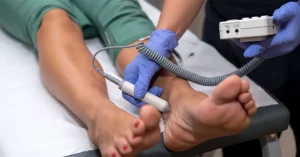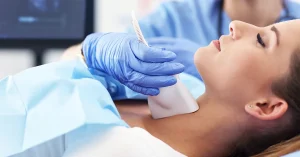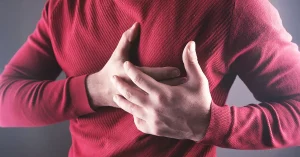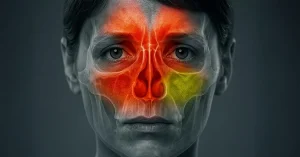What Are Hemorrhoids?
Hemorrhoids involve the abnormal development of hemorrhoidal veins, which can occur in some individuals. These veins are part of a normal structure that supports rectal continence—the mechanism that enables the rectum to empty through the anal canal during defecation.
During an examination with a device called an anoscope, hypertrophy of the normal hemorrhoidal veins is often visible, appearing as purple-colored growths in areas that normally have smooth pink mucosa.
Causes of Hemorrhoids
There are several contributing factors that can disrupt the normal rectal mechanism and lead to hemorrhoids:
- Constipation and pelvic congestion are primary causes;
- Lifestyle also plays a significant role. Prolonged car rides, the premenstrual period, and lack of physical exercise are frequent triggers for hemorrhoid flare-ups;
- Stress is a leading factor, particularly when chronic—financial worries, family or work stress can cause treatment failures or recurrences. In such cases, relaxation techniques and regular physical activity such as exercise are recommended;
- A hereditary predisposition is also frequently observed.
Types of Hemorrhoids
External hemorrhoids are formed from skin that protrudes outside the anal lining. These are constantly exposed and can become irritated from friction with underwear. In many cases, external hemorrhoids in women occur after childbirth due to pushing during labor.
Internal hemorrhoids are located deeper inside and can bleed easily. These can become externalized during bowel movements or physical effort. If left untreated, both internal and external hemorrhoids may occur simultaneously, especially when the condition becomes chronic.
Complications of Hemorrhoids
Complications may arise in both minor and more pronounced hemorrhoids. Thrombosis is the most frequent postoperative complication. It results from stagnated blood in the hemorrhoidal varices forming a clot (thrombus), which is then pushed out due to the body’s inflammatory response. This forms a painful and firm purple-colored mass near the anus. This condition requires urgent care as it is extremely uncomfortable. If left untreated, the clot may evolve into a fibrous lump that remains externalized and may continue to cause symptoms.
Preventive Treatment for Uncomplicated Hemorrhoids
The goal is to reduce the frequency of painful flare-ups by addressing their root causes. Preventive lifestyle changes should include:
- A suitable diet that limits spicy foods, mustard, alcohol, and addresses constipation with high fiber intake. Eating fiber-rich foods in the morning is especially useful to regulate digestion without medication;
- Regular physical activity such as walking, jogging, swimming, or exercise routines;
- Drug treatments usually consist of herbal extract-based medications and need to be taken for several months;
- Local treatments, such as ointments and suppositories, are particularly effective during painful episodes;
- Constipation management is vital to ensure smooth digestion and must be tailored to the underlying cause. Identifying these causes helps in prescribing the right diet and medication for each case.
Treatment of Hemorrhoids
The treatment for thrombosed hemorrhoids is simple and involves making a small incision under local anesthesia to remove the clot and relieve the pain. Subsequently, the hemorrhoid itself needs to be addressed to prevent recurrence.
If the clot is not removed surgically, it may evolve into a fibrous mass that continues to protrude. Though it may not be painful, its presence can be bothersome and treated using the steam sclerotherapy method, which does not require hospitalization and is done under local anesthesia.
The guidance of a gastroenterologist is essential, especially since self-prescribed laxatives can cause complications and often fail to deliver long-term results.
Hemorrhoids: Associated Conditions and Surgical Needs
Anal fissures are a common complication caused by straining and constipation. These consist of tears in the mucosa that are extremely painful during and after defecation. Recent and minor fissures can be treated by injecting a medicated substance directly into the lesion, a procedure that does not require anesthesia or hospitalization.
Chronic fissures often require surgery, involving hospitalization for 48 hours and use of steam to minimize postoperative discomfort. Anal fistulas may occur independently or alongside hemorrhoids and fissures.
A fistula is a rectal wall abscess that drains externally near the anus. Its symptoms include persistent, recurrent discharge, sometimes purulent in nature. The only definitive treatment is surgical, involving opening the fistula tract to the skin for proper drainage.
In some cases, an elastic thread is inserted to aid in gradually reducing the incision depth. Surgery typically requires a 3 to 4-day hospital stay and two weeks of recovery.
Get The Right Treatment For Your Hemorrhoids
Treatment of hemorrhoids is significantly less painful when addressed early, before complications develop or the condition becomes severe. Modern techniques greatly reduce both postoperative discomfort and pain, offering a far more effective approach to this common and often neglected condition. With appropriate care and timely intervention, hemorrhoids can be managed or treated, ensuring improved patient comfort and long-term health outcomes.
Hemorrhoids Treatment Cluj – Information and Appointments: (+40) 364 140 261



